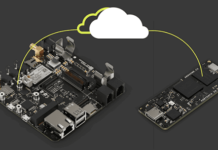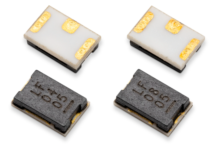
With the growing adoption of USB-C, temptation to upgrade micro-B port with USB-C by simple connector replacement and schematics inherited from legacy devices is high. Some companies experienced sadly these quick and dirty implementation and had to re-design properly their device as reported by The Verge (or artechnica)
DESCRIPTION OF THE PROBLEM and CURRENT SOLUTION SO FAR
Unfortunately (or fortunately), this does not work, as legacy USB used to be hot sockets (5V always available on VBUS power pin), while clean USB-C implementation requires cold socket implementation (VBUS line not powered until a sink is detected by the source). This means that direct access to the battery charger is impossible until the interface IC makes the decision to do so. Somehow, this is the right way to proceed, as USB-C connector is the same for SINK and SOURCE. Taking into account that charging power is scalable (from 2.5W to 100W) and can be also bidirectional, we’d better rely on dedicated controllers to ensure that connected devices are compatible together (ie. an AC adapter and a smartphone for instance), and working as expected (AC adapter delivering 5V by default, and not 20V). To do so, controllers must implement protocol features but also application features. The protocol could be even implemented by software, reporting the power management issues and interoperability ownership at a system level, which is the most appropriate. Indeed, what really makes the value of a controller are the application features, which guarantee effective and certified implementation in the system and appropriate behaviour when devices are operating in normal conditions of course, but especially when an unwanted situation occurs.
A change of PARADYGM

Smartphone manufacturers are kindly but officially under pressure from the European Parliament to adopt USB-C universal charging as reported by the BBC. As Brussels is adopting USB-C in EU regulation, users will benefit a lot from this technological and political push: the possibility to charge everywhere, and at anytime, any kind of portable devices, making everyone’s life easier. Whereas the need for reducing electronic waste gained painfully people’s mind in the last 10 years, it has recently transformed into an everyone’s duty to limit overall men’s environmental impact. This is one of the Covid-19 lesson’s learns.
An opportunity for companies
Some companies have understood it, and can see also in this realization an opportunity to stick with society’s mood, without engaging extra cost induced by a new regulation. Cost penalty for transforming once a charger into a universal one is balanced by the cost savings of making regularly proprietary chargers: no need to design, manufacture, package, transport and sell a charger for every device. Chargers are compulsory accessories to make devices work, but add extra cost, extra time, extra weight that never make anyone preferring a device to a competition one: no value in the act of purchasing, just extra wastes for the seller. Some famous companies started to sell their device on the market without including any AC adapter, but just a cable. A good example is Fatboy with its successful Edison the Petit portable lamp, having embraced the “no charger included” policy as a contribution to its sustainability program.

More and more articles regularly report that both Apple and Samsung might be adopting such a philosophy starting from 2021.
PEOPLE READY TO BUY THEIR UNIVERSAL CHARGER

Not only smartphones makers are concerned by universal charging. This is how USB-C becomes a game changer: any kind of small portable device is eligible to 15W USB-C charging: computer and smartphones accessories of course, but also Bluetooth speakers and audio headsets, hearing aids and other medical devices, payment terminals or Wi-Fi access points, wearable devices such as smartwatches, healthcare devices such as shavers, or battery powered outdoor LED lights etc…
All these devices can be simply and universally charged by an affordable home charger, or even a USB outlet durably integrated into the wall.
[TECHNICAL Challenge]
As a matter of fact, USB-C is the solution to address universal charging for small portable devices. But universality has 2 corollaries in engineers’ mind: what about INTEROPERABILITY (guaranteeing customer experience) and what about SAFETY (on which no compromise can be done)?
STUSB4500L USB-C controller from STMicroelectronics has been designed with these 2 objectives in mind.
[SAFETY]
Benefit of a clean, cold socket implementation, is that the switch is open by default, meaning that at connection time, charging path is fully isolated from the connector. Switch is closed only by STUSB4500L decision, guarantying a safe VBUS at 5V (so called Vsafe 5V). Compared to discrete implementation with protection switch, MOS opening time does not have to be considered, limiting the risk of destructive power at the connection.
Being a standalone interface IC, it does not need any connection to local MCU or application processor.
Therefore, it does not only preserve MCU hardware resources (such as GPIO or ADC etc…), but it also guarantees a full electrical isolation between the port and the heart of the system, which is always safer.
[INTEROPERABILTY]
Handling faults is a must, but managing clean re-start after a fault occurred is a major concern for interoperability. This is what STUSB4500L does by having a tight interaction between native protection features and embedded USB-C state machine. For instance, an overshoot on VBUS will be detected by the STUSB4500L. As an immediate action, the VBUS switch will be opened and VBUS discharge be managed. CC pin terminations are removed until VBUS voltage turns back to safe conditions. Electrical disconnection / connection can be then emulated without having to detach / attach the cable mechanically. In best case conditions, fault protection and re-start processes can be so fast that not even visible to end-users, allowing the charging process to continue automatically without manual action from the user.
In order to guarantee interoperability, the IC has been certified (TID #1455) as “Power sinking device” according as USB-C rev 1.4 standard.
[APPLICATION BENEFITS]
Once a SOURCE is identified and verified to deliver the expected 5V, protection switch is closed to initiate charging. Benefits of having a standalone controller is that this process is immediate, and does not need the application processor to wake-up or boot, which might be pretty long especially when waking-up from dead battery. Maximum charging current is also guaranteed from the beginning as the information is reported by the STUSB4500L controller and can be used to set the maximum charging current input from the battery charger. Overall, it makes the overall process (from the connection to the charging):
- SAFE (safety first, always),
- FAST (customer experience matters),
- SIMPLE (designer’s time matters as well,)
- and OPTIMIZED (when effectiveness is achieved with simplicity, this is called ROBUSTNESS).
[ZERO POWER]
Another key issue to address, especially for portable device, is the preservation of the battery autonomy. Designers are naturally tracking any leakage current in the system, and a USB interface, especially when it is not in use (maybe 90% of the time) should not be a detractor of the autonomy.
Being powered directly from VBUS, STUSB4500L removes the need from any discrete or external LDO support. Power is taken directly from the SOURCE, when it is correctly identified and the connection established. In all other cases (no connection, or connection to another sink), STUSB4500L is not powered as it simply does not need to.
CONCLUSION [CALL TO ACTION]
For fast migration to 5V USB-C charging using STUSB4500L, just try our mini-Dongle following this link or download the full Altium library for quick implementation into your design.
REFERENCE ARTICLE FROM CYPRESS


















